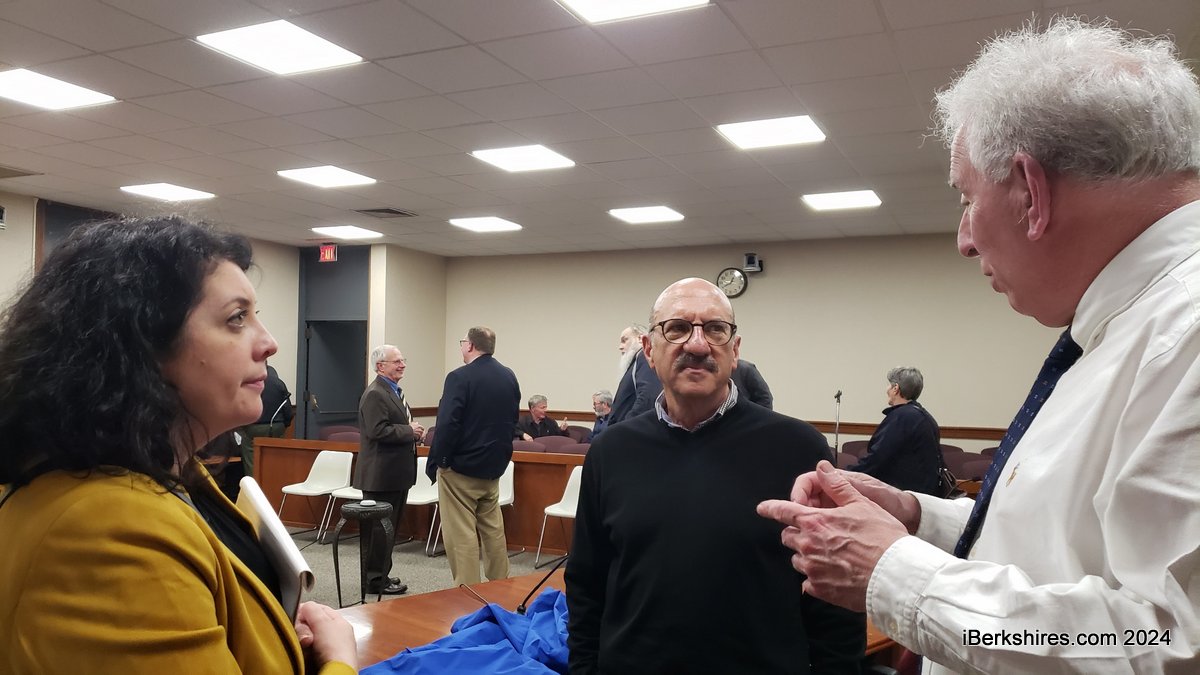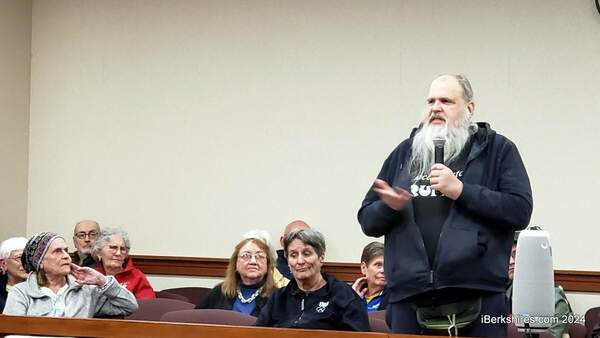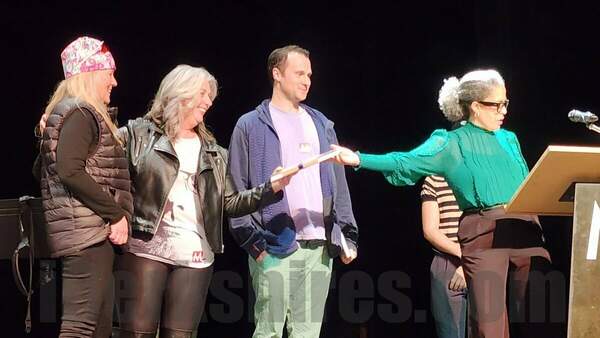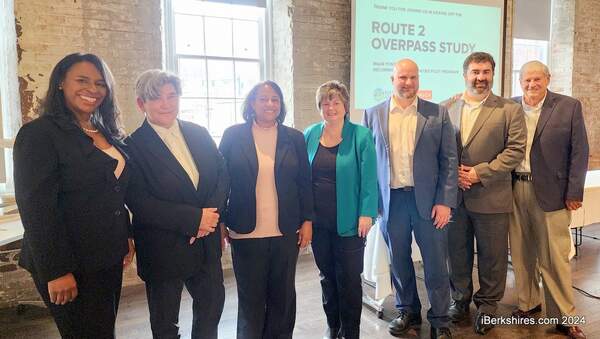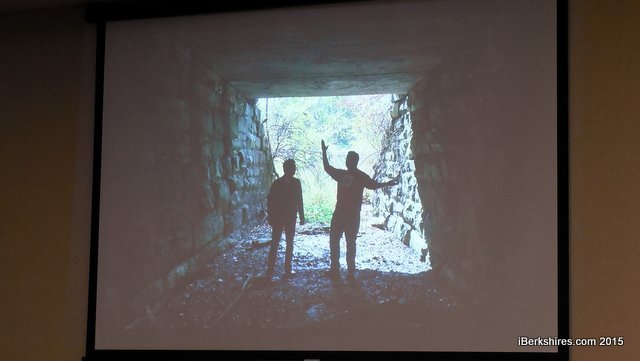
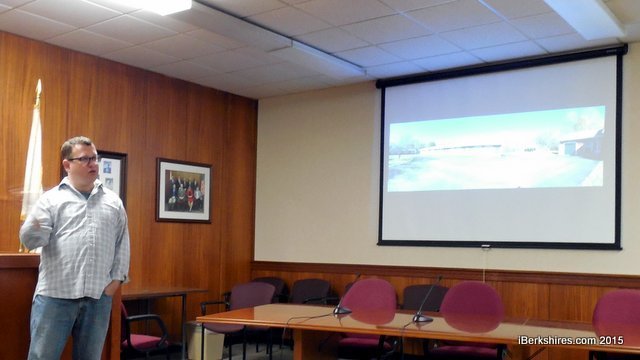
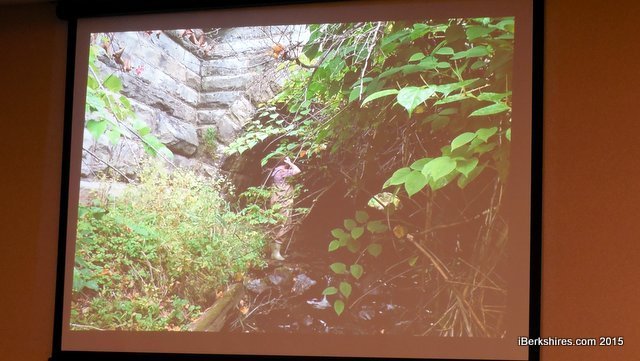
Redwood Motel Developers Expand To Blackinton Mill And Beyond
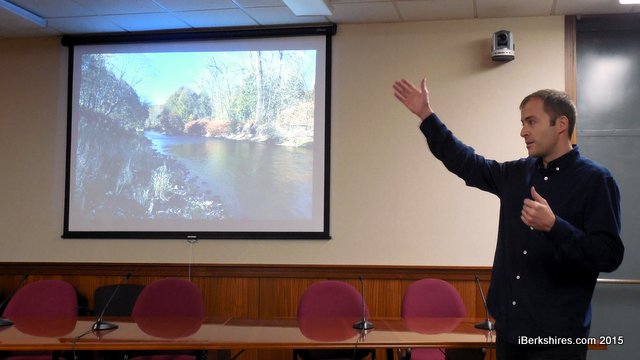 Redwood Motel lead developer Benjamin Svenson explains his team's vision of a hospitality and recreational area around the Hoosic River. Redwood Motel lead developer Benjamin Svenson explains his team's vision of a hospitality and recreational area around the Hoosic River. |
NORTH ADAMS, Mass. — The Redwood Motel developers are planning to buy and eventually redevelop the historic Blackinton Mill.
For now, the mill and some 30 more acres will expand upon the original plans to transform the dated State Road motel into a more contemporary and nature-attuned development.
Project Manager Eric Kerns, lead developer Benjamin Svenson, and architect Simeon Bruner on Thursday unveiled at City Hall a continuation of their redevelopment of the State Road motel that will extend 30 acres around the river to the Blackinton Mill, which they plan to purchase and close on in November.
Kerns explained that the Hoosic River, which initially drew them to the motel this spring, held a few more surprises for the team — after walking a few feet down the riverbank they found themselves transported into another world.
"You go down and the road disappears and you get to walk through this beautiful flood plain forest with giant cottonwood trees," Kerns said. "Then end up in this incredible beautiful spot on the Hoosic River."
Mayor Richard Alcombright, a lifelong resident, said he often played near the river as a kid. He said the city is lucky to have such a "healthy river."
"The river is kind of the focal point of the whole thing and to have these guys kind of identify that as such is great," he said. "When you go down there you can't hear the trailer trucks anymore, you just hear water and birds."
The developers are proposing to turn the area back to native woods and create paths that connect around the riverfront and an open area near where the old wastewater treatment plant used to be. Bruner said the development would be a "rural park in the middle of an industrial city, privately owned and open to the public."
Kerns added that plans include building a barn on the former treatment plant site where skiing and other recreation equipment could be rented.
Bruner suggested the possibilities of a music venue, wedding venue, or seasonal lodging. Svenson said they have been collaborating with the city, landowners, and state agencies in order to obtain the land.
"We have been able through collaboration ... to assemble and put the pieces of the puzzle back together and create a large canvas for which we can hopefully paint one cohesive thing," Svenson said.
Svenson added that in their initial tours of the properties, they came upon access points that go over and under the train tracks, making the project possible. These tunnels, or water flumes, were once used by the mills.
"Most businesses are not viable because you can't really get there ... You are surrounded by water and the railroad tracks, but as a person on foot or bike it's a dreamy way to get to and from," Svenson said. "It is a gateway to an experience that is really something else."
Bruner said the mill will be purchased for an "affordable price" and there is really no plan for it at this time. Half the building is occupied by tenants, including the Williamstown Theatre Festival, and the team does not want to interrupt any operations currently there.
The century-old mill was purchased in 2010 by New York brothers Lawrence and Marc Magid with the idea of transforming it into retail and residential space. Two years later, the focus became more commercial, although residential use was still on the table.
Bruner said there is no rush to develop the mill because phase one of the project focuses on the motel, which they look to get underway in the spring by working on the current structure. Phase two would extend the motel to nearly 30 rooms.
After that, the project would expand to encapsulate the green space and the mill.
"It is really small enough to be manageable, and we aren't compelled to do anything with it instantly," he said. "The real trick here is to find compatible uses that piggyback on one another and are catalytic for our development and the developments around it."
He said they are open to all ideas and would like to tie into the visual and performing arts the area has to offer and "find a creative way of doing something that hasn't been done."
 An image showing the proposed size and location of the project. An image showing the proposed size and location of the project. |
Kerns said he hopes the complete development will allow visitors to tap into North Adams' industrial and natural past. He added that a theme of the project is confluence since it is a meeting of the river, the rail, and the Appalachian Trail.
"It's taking this town's historic thoroughfares and this river and they come together right in the middle of our city in a place that the city is not using in a meaningful way," Kerns said. "Oh, and it's beautiful."
Svenson added that they would love to have the planned bike path connecting North Adams to Williamstown run through the development.
Alcombright said the new path could be a very viable option that would connect many of the proposed cultural developments in the area.
"It just creates an incredible playground ... with what is going to be here between this project and the potential airport art project and the Greylock Mill property," Alcombright said. "It is this incredible new fantasy ride ... it is just getting bigger than we ever imagined."
Svenson said there is not branding or a name for the development yet because the team wants to continue to meet with residents and get a better understanding of the area's history. He said the name should come organically.
"The way that these things happen best in my view is that you stew in it and you learn about it," he said. "This week we know things we didn't know last week about the origin of this place, and if we were to name it in the beginning we may miss it."
Alcombright thanked them for their interest in the city, their hard work, and the dedication to the city's rich history.
"To me it is nostalgic — the river, the railroad, and the mills were such a significant part of our past and they all kind of stopped and cleaned up," he said. "Now they are a significant prat of our city again."
Tags: Blackinton Mill, motels, hotels, redevelopment,

